By Antonio S. Lopez
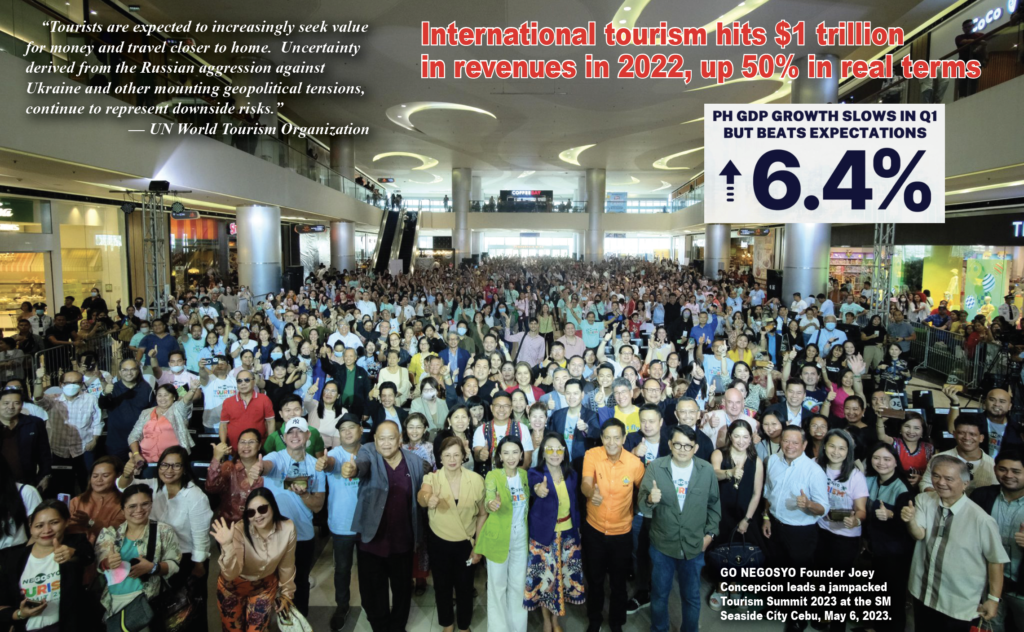
In the first quarter of 2023, aviation jet fuel sales of Petron Corp., the Philippines’ largest oil company, nearly doubled, because of the travel boom.
For the whole of 2023, Cebu Pacific, the Philippines’ largest domestic airline, will generate 22.5 million in passengers, according to Alexander Lao, president. The 22.5 million is up 52% from the 14.8 million domestic and international passengers it carried in the whole of fiscal year 2022 and recover the 22.5 million volume carried pre-pandemic in 2019.
The 14.8 million was up 335% from the passenger volume of FY 2021. In 2022, Cebu Pacific’s system-wide revenues soared 262% due to the triple-digit growth of passenger growth and ancillary businesses.
Over the long term, national flag carrier Philippine Airlines will seek delivery of nine new high-capacity Airbus 350 jet planes as it pursues a massive expansion in seat capacity and route coverage.
For his part, Kevin Tan, CEO of Alliance Global Group, Inc., has disclosed his group’s plans to expand its hotel room capacity to 12,000 (from 7,000) in the next five years, to consolidate their claim of being the Philippines’ largest hotel operator.
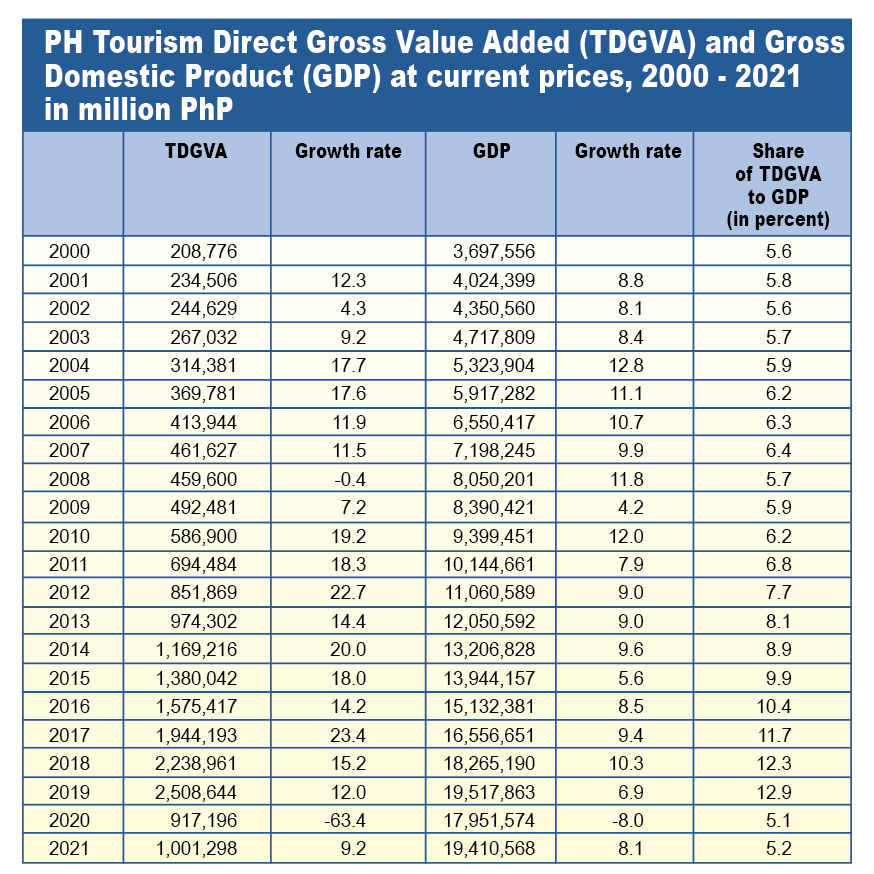
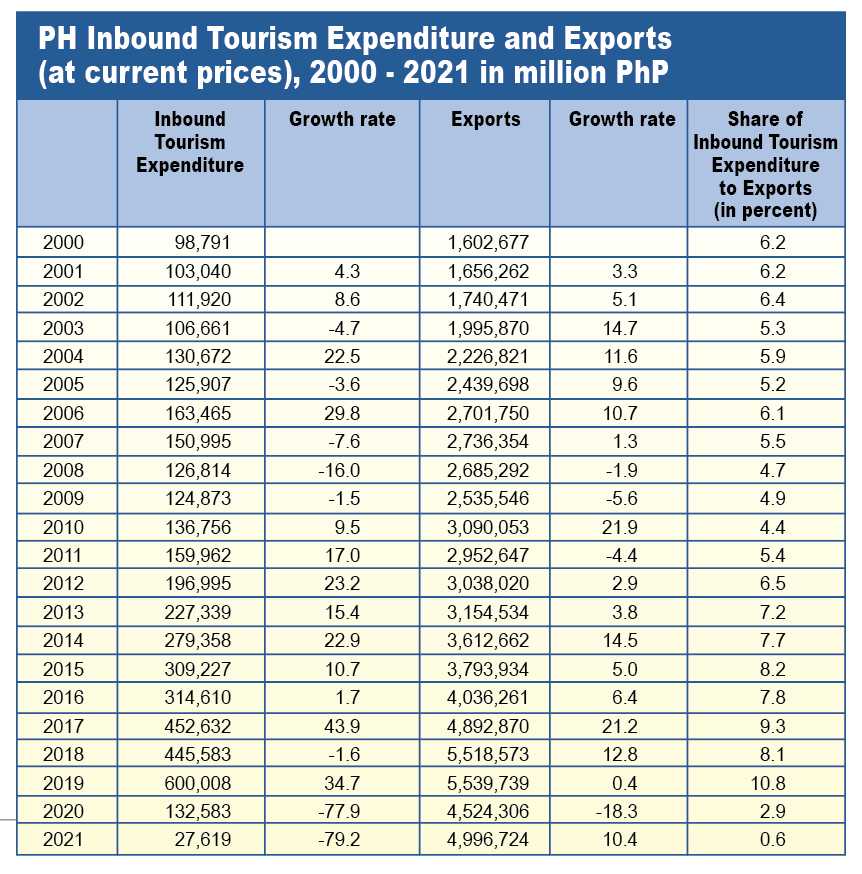
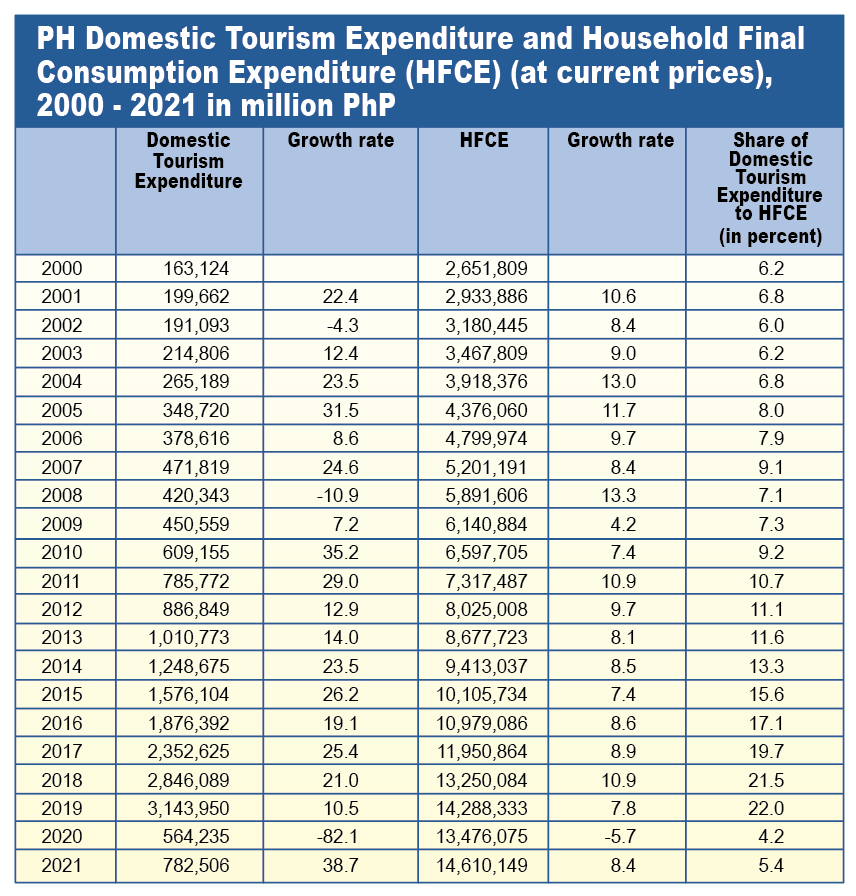
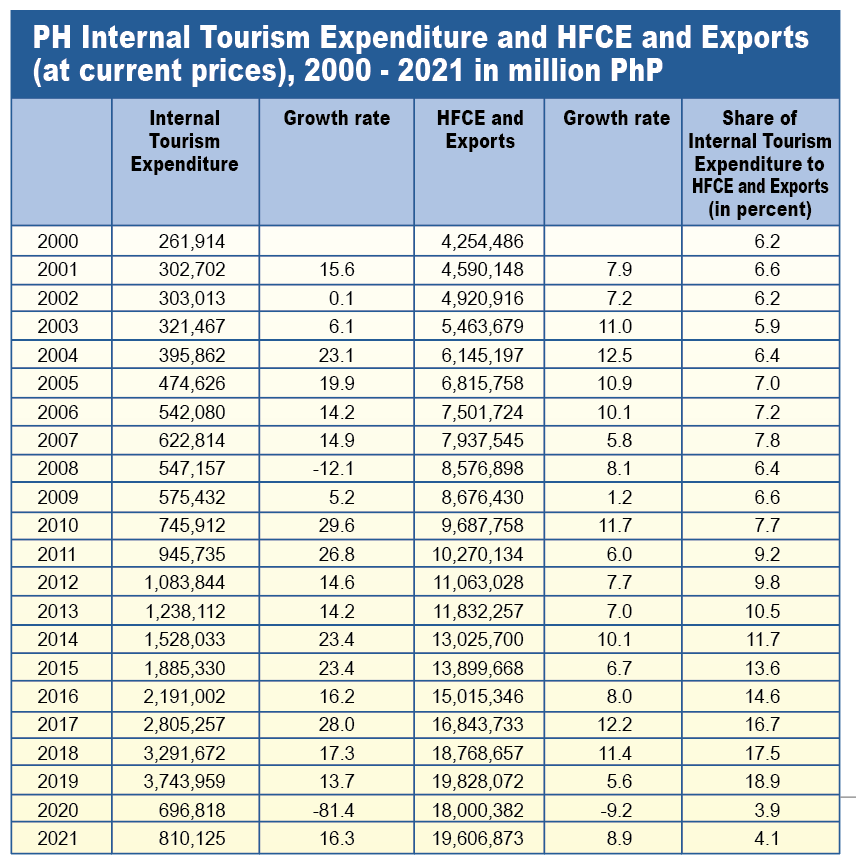
The 12,000-room capacity will pull AGI far ahead of the JG Summit-Robinsons group, which has 5,000 rooms; Ayala Group, with 4,058 rooms; and SM Group with 2,211 rooms.
There is now a severe shortage of about 10,000 hotel rooms in the country, as well as space for meetings, conventions and exhibitions.
The hotel room shortage has made Manila hotel rates among the highest in the region.
A five-star hotel in BGC charges P25,000 per night, no breakfast included. That’s $455 per night.
For the same money, a tourist can get a 4-star room in Paris 55 sqm with a balcony with flowers and a stunning view of the Eiffel Tower. And breakfast is included, which is sumptuous.
Global boom
“International tourism is well on its way to returning to pre-pandemic levels, with twice as many people travelling during the first quarter of 2023 than in the same period of 2022,” says the latest report of the UN World Tourism Organization (UNWTO).
UNWTO data shows:
Overall, international arrivals reached 80% of pre-pandemic levels in the first quarter of 2023 An estimated 235 million tourists travelled internationally in the first three months, more than double the same period of 2022.
Tourism has continued to show its resilience. Revised data for 2022 shows over 960 million tourists travelling internationally last year, meaning two-thirds (66%) of pre- pandemic numbers were recovered.
Recovery by Region in Q1 2023
Asia and the Pacific accelerated its recovery with 54% of pre-pandemic levels, but this upward trend is set to accelerate now that most destinations, particularly China, have re-opened.
Europe reached 90% of pre-pandemic levels, driven by strong intra-regional demand.
Africa reached 88% and the Americas about 85% of 2019 levels.
Middle East the strongest
The Middle East saw the strongest performance as the only region exceeding 2019 arrivals (+15%) and the first to recover pre-pandemic numbers in a full quarter.
The UNWTO data also analyses recovery by sub-region and by destination: Southern Mediterranean Europe and North Africa have also recovered pre-pandemic levels in Q1 2023, while Western Europe, Northern Europe, Central America and the Caribbean all came close to reaching those levels.
UNWTO Secretary-General Zurab Pololikashvili says: “The start of the year has shown again tourism’s unique ability to bounce back.”
Tourism nears pre-pandemic levels
“In many places, we are close to or even above pre-pandemic levels of arrivals,” gushes Zurab.
“ However, we must remain alert to challenges ranging from geopolitical insecurity, staffing shortages, and the potential impact of the cost-of-living crisis on tourism, and we must ensure tourism’s return delivers on its responsibilities as a solution to the climate emergency and as a driver of inclusive development.”
International tourism receipts grew back to hit the $1 trillion mark in 2022, growing 50% in real terms compared to 2021, driven by the important rebound in international travel. International visitor spending reached 64% of pre-pandemic levels (-36% compared to 2019, measured in real terms).
By regions, Europe enjoyed the best results in 2022 with nearly $550 billion in tourism receipts (EUR 520 billion), or 87% of pre-pandemic levels. Africa recovered 75% of its pre-pandemic receipts, the Middle East 70% and the Americas 68%. Due to prolonged border shutdowns, Asian destinations earned about 28%.
What’s in store?
The Q1 2023 results are in line with UNWTO’s forward-looking scenarios for the year which project international arrivals to recover 80% to 95% of pre-pandemic levels.
UNWTO’s Panel of Experts expressed their confidence in a strong peak season (May-August) in the Northern Hemisphere, reflected in the latest UNWTO Confidence Index which indicates performance for the period is on track to be even better than 2022.
Tourism’s recovery faces some challenges.
Like inflation, high oil prices, war
According to the UNWTO Panel of Experts, the economic situation remains the main factor weighing on the effective recovery of international tourism in 2023, with high inflation and rising oil prices translating into higher transport and accommodations costs.
As a result, tourists are expected to increasingly seek value for money and travel closer to home.
Uncertainty derived from the Russian aggression against Ukraine and other mounting geopolitical tensions, also continue to represent downside risks.
